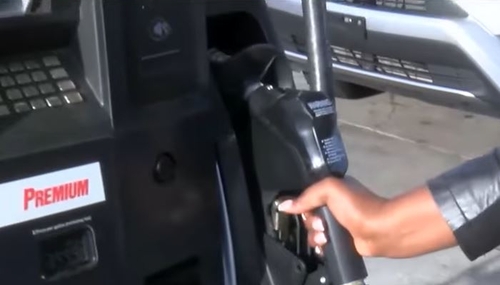
Conservative readers of the June 9 Washington Post could understandably answer yes to the aforementioned question after reading the front page story "Early Lesson in Eco-Activism Comes From Economics Book."
Writer Daniel de Vise begins:
Casting about for a cause, the Young Activist Club at Piney Branch Elementary settled on something close at hand: the hundreds of polystyrene trays and plastic utensils discarded daily in the school cafeteria.
The students from Takoma Park, known as one of the D.C. region's most socially conscious communities, have raised $9,000 from foundations and sympathetic residents to purchase a dishwasher, washable flatware and other supplies so they can banish Styrofoam from their school. But they have met unexpected resistance from a school system in which food-service operations rely on the convenience and disposability of plastic.
Back up the train. An elementary school has politically motivated extracurricular clubs? But young children are highly impressionable and the the political activism they would engender most certainly would be guided by the political views of their parents and teachers. As de Vise admits, Takoma Park is one of the area's "most socially conscious" (read: liberal/progressive in politics) communities.
But if the community at-large is pretty liberal, why on Earth isn't the push for eliminating styrofoam from the school's cafeteria the province of the Parent-Teacher Association (PTA)?
De Vise doesn't seem curious on that point, nor does he seem interested in probing how much the students understand about cost-benefit analysis.
Instead, de Vise opts to dutifully transcribe quotes from the little kids who are no doubt egged on by their parents:
"Polystyrene trays are bad for the environment and they have a big carbon footprint and they're made out of oil, which is bad for the environment, because it makes global warming," said Margot Bloch, 8, a third-grader at the school. Her mother, a peace activist, is among the club's sponsors.
Students have won over their principal, the school lunch lady and the City Council, which last year banned the use of Takoma Park funds to purchase small plastic water bottles. About 20 children converged on council chambers last night and spoke beside a stack of disposable trays.
"That's one day's trays. They're as tall as my brother," said third-grader Emily Fox, 8. The council passed a resolution supporting the students' efforts.
While de Vise noted that the students did crunch some numbers, he failed to explain that the cost of going green would exceed the present arrangement, even leaving out the supposedly environmentally harmful effects of the schools dish detergent use:
Montgomery school officials said they are considering biodegradable alternatives to foam. But they rejected the school's proposal to wash and dry its own dishes in a brief June 1 memo, citing "a number of operational issues," including labor costs, that led them to disposable trays in the first place. Students sometimes discard reusable trays or repurpose them as sleds. Dishwashers consume water and power and introduce chemicals into the environment.
[...]
The Takoma Park students calculate that their school spends $3,700 a year on disposable trays and $1,600 on plastic cutlery. They estimate it would cost between $2,000 and $5,000 to buy a rebuilt dishwasher, $1,500 to buy enough hard plastic trays for the 500 students and $400 to $600 for washable flatware. They also say it could cost $5,000 a year to pay someone to operate the dishwasher.
One-time capital costs aside -- like the $5,000 for the dishwasher -- only $300 is saved by going green in operating costs while it appears the replacement and repair costs of the new equipment is ignored.
For example, how long will the new trays and silverware last before being worn out and needing replacement? What about replacing trays, flatware, and silverware that end up lost, broken or stolen by year's end? What of the cost of detergent and increased energy use to heat the water used for the dishwashers? Indeed, what of the increased water, energy, and chemical use that leaves an adverse -- according to environmentalists -- footprint?
I'm not expecting a newspaper reporter to ask these difficult questions of impresionable 8-year-olds, but they are legitimate questions for the adults who are using their kids as "socially conscious" political props.
Caption for photo above: Paula Nersesian helps daughter Kira Goo, 9, test the step-stool provided for Piney Branch Elementary pupils at last night's Takoma Park council meeting. (By Kevin Clark -- The Washington Post)




